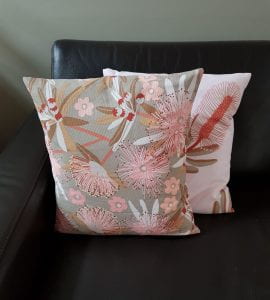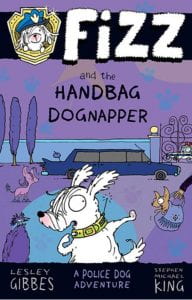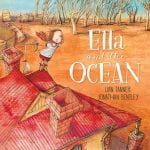 In April 2019, I received the exciting news that my paper Information literacy, young learners and the role of the teacher librarian was selected for the Jean Arnot Memorial Fellowship. The Jean Arnot Memorial Fellowship is funded by the National Council of Women of NSW and the Australian Federation of Business and Professional Women’s Associations to commemorate Miss Arnot a former librarian with a remarkable career of 47 years at the State Library of NSW. In May, I was honoured to attend the Jean Arnot Memorial Luncheon at NSW Parliament House with my mother.
In April 2019, I received the exciting news that my paper Information literacy, young learners and the role of the teacher librarian was selected for the Jean Arnot Memorial Fellowship. The Jean Arnot Memorial Fellowship is funded by the National Council of Women of NSW and the Australian Federation of Business and Professional Women’s Associations to commemorate Miss Arnot a former librarian with a remarkable career of 47 years at the State Library of NSW. In May, I was honoured to attend the Jean Arnot Memorial Luncheon at NSW Parliament House with my mother.
In August 2019, the paper was published in the Journal of Australian Library and Information Association and published by Tayor & Francis Online https://doi.org/10.1080/24750158.2019.1649795
[wmd-buttons style=”stiched” button_color=”#1279b5″ font_color=”#ffffff” size=”2″ border_radius=”4″ position=”center” target=”_self” ls-id=”5d678b3c03fab”][wmd-buttons-button label=”Josephine Laretive (2019) Information Literacy, Young Learners and the Role of the Teacher Librarian, Journal of the Australian Library and Information Association, DOI: 10.1080/24750158.2019.1649795″ link=”https://www.tandfonline.com/doi/full/10.1080/24750158.2019.1649795″/][/wmd-buttons]
The link below is for a free eprint, there are only 50 available so if you are interested please click the link to receive your free copy.
https://www.tandfonline.com/eprint/RHUP7H7CEKRZNX6HACVE/full?target=10.1080/24750158.2019.1649795
The motivation in writing the paper was triggered by interest in the topic and awareness of limited literature available regarding information literacy in the early years of schooling. In addition, I was preparing for a conference based on showcasing information literacy teaching and learning experiences with students in Years 1-2. The conference presentation can be accessed via:
[wmd-buttons style=”stiched” button_color=”#1279b5″ font_color=”#ffffff” size=”2″ border_radius=”4″ position=”center” target=”_self” ls-id=”5d6225099f462″][wmd-buttons-button label=”Information & digital literacy for younger learners. Oliver v5 User Conference: Community & Diversity, 17 May 2019″ link=”https://www.softlinkint.com/downloads/Josephine_Laretive_-_Information_literacy_and_young_learners.pdf”/][/wmd-buttons]

Staff training lead by Jean Arnot. Mitchell Building, photograph by Ivan Ives, Pix Magazine Collection A7417037h https://www.flickr.com/photos/statelibraryofnsw/32331882277/
[wmd-divider style=”knot” spacing=”40″ color=”#002426″ size=”2″ ls-id=”5d61319160f95″/]
It is an honour to be here today to receive the Jean Arnot Memorial Fellowship. I wish to thank the National Council of Women of New South Wales, the Australian Federation of Business and Professional Women’s Associations, and the State Library of New South Wales for making possible such a prestigious award that acknowledges, recognises and commemorates female librarians. Learning of Jean Arnot’s dedication to librarianship and commitment to women is inspirational, and I am proud to be associated with this award.
In reflection, I realise 2019 marks for me twenty-five years of service to the library and information profession. However, libraries have played a role throughout my life. Libraries allowed me to borrow books beyond my abilities as a child, developed me as a teenager, informed me as a young adult, and allowed bag loads of books to be loaned to my own children. Libraries continue to educate me, deepen my knowledge, stimulate my curiosities, provide hope, and are always there for me.
Back in 1994 when I worked as an information specialist at McKinsey and Company, our team had a dedicated computer where we had to plug the right coloured cable in to connect to the Internet. We had specialised training about URL’s and how to search the World Wide Web. Since 2002, my role as a teacher librarian has allowed me to be at a school library each day surrounded by young minds, literature, information and technology. The pace of change is astonishing, what I once taught to twelve-year-olds I now have adapted and teach to children in their first years of schooling. When I recently asked a Year 2 class with an information need ‘how can we find out?’ there was a pause, I was hoping to hear ‘look in a book,’ expecting to hear ‘Google,’ but was not prepared when one child quietly replied ‘Ask Siri.’ How far we have come from plugging a cable into a dedicated computer to using voice recognition to search for information.
Commitment to learning and near completion of the Master of Education Teacher Librarianship at Charles Sturt University has provided me with strength and direction to adapt, and allowed me to enhance my commitment as a teacher librarian. I look forward to what is ahead.
 Little Bird’s Day by Sally Morgan and illustrated by Johnny Warrkatja Malibirr provided a superb way to explore change over one day.
Little Bird’s Day by Sally Morgan and illustrated by Johnny Warrkatja Malibirr provided a superb way to explore change over one day.










































